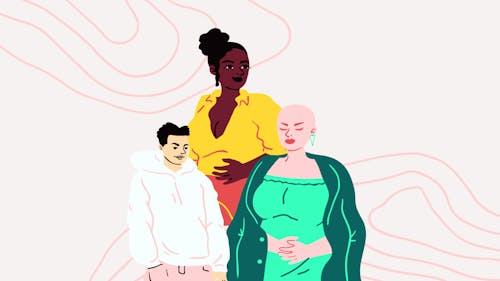Fashion's plus-size problem: Here's why size diversity in luxury brands matters

The luxury fashion industry is notorious for its exclusivity. Its lack of representation for varied body types can arguably be considered as one of its biggest downfalls: High fashion is infamous for not being representative or inclusive of those who aren't white, thin and outside of the popular beauty standard.
In recent years, luxury fashion brands have opened their doors to a more diverse array of models from different ethnicities. But when it comes to extending their size ranges to include plus sizes, not many changes — if any at all — have been made.
High fashion also often only produces extremely small sizes at extremely high prices, ultimately leading it to exclude a vast majority of the general public. This, in turn, makes purchasing luxury clothing almost impossible for anyone who's plus-sized or not ultra-wealthy.
Two-thirds of women in the U.S. are above a size 14, creating a $21.4 billion dollar revenue for the plus-size apparel industry in 2016. Although funding extended sizes can be an expensive endeavor for straight-size fashion brands, people like Christian Siriano have proved that it could be a valuable investment, according to Fashionista.
Siriano tripled his business after adding plus sizes to his clothing line. Siriano said he felt it was unfair to exclude plus-size women from feeling beautiful and glamorous, according to Insider. All women, regardless of size, deserve to feel represented and respected within the fashion industry — and Siriano was one of the first to make that happen.
Plus-sized people have been left with very few options when it comes to purchasing luxury goods. One of the only ways that plus-sized people can participate in high fashion is by owning a luxury bag. Expanding sizing within the high fashion industry would enable all people, regardless of size, to be able to enjoy well-made luxury pieces that make them feel confident.
Fashionista also found that many popular luxury brands produce clothing up to a U.S. size 6, or an XXL in tops. Some brands sell certain pieces in up to a U.S. size 16, but that is mostly limited to oversized blazers and stretch drawstring pants. Although some plus-sized customers do have a small number of options, a few pieces from each brand are not enough.
Refinery29 reports that approximately 67 percent of all women in the U.S. are above a size 16. For fashion week in fall 2020 and spring 2021, only 46 models out of 6,879 and 34 models out of 2,293 were plus-size, respectively.
Representation is extremely important in our media, and the fashion industry is a huge part of that. When people aren't represented fairly or equally, it makes them question their validity within society. This feeling of being outcasted can lead people to believe that they don’t belong among their peers.
The luxury fashion industry has been excluding masses of people from their brands. This exclusion has caused many people to feel out of place or unworthy. The luxury price tag on these goods already excludes whole socioeconomic classes, but their limited size availability makes their pool of clientele even smaller.
As luxury brands continue to grow their annual profits, they need to work on representation. Creating additional sizing would give all people the opportunity to purchase luxury clothing, which would expand the brand’s profits and customer base. Expanding representation and creating products for all people will help luxury brands progress into the future, meeting the needs of all people in the modern and diverse world.
Designers like Siriano are beginning to change the game and pave the way for other luxury brands to follow suit, but not enough change has occurred. All people deserve the ability to buy the clothes they want and shouldn't be handed limited options due to a lack of sizes.



